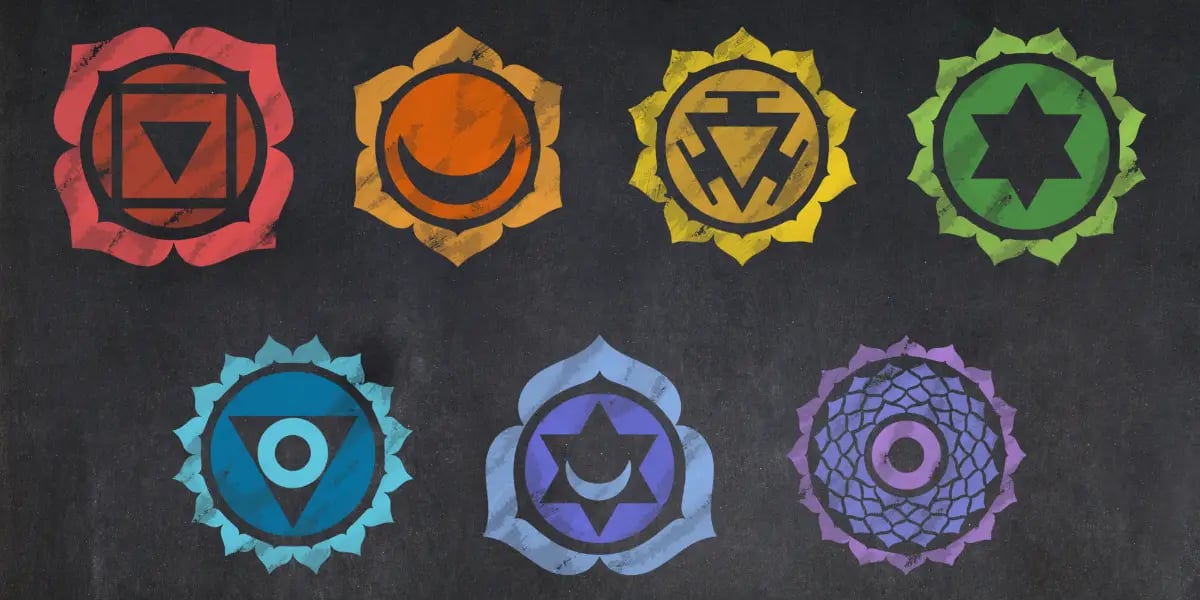Chakras are energy centers that are associated with a specific color, and understanding these colors can help decode the state of one’s chakras.
Energy centers within the body are called chakras and they are thought to have an impact on physical, emotional, and spiritual health. Every chakra is linked with a unique color and comprehending these colors can assist in interpreting the condition of your chakras. In this article, we will explore the significance of every chakra color as well as ways to utilize this information to bring balance and healing to your chakra.
Table of Contents
What do chakra colors mean?
The 7 chakra colors are a part of the ancient system of Hinduism that identifies key chakra in the body. These centers are believed to play a crucial role in our mental, emotional, and physical well-being. The seven chakras correspond to different body parts including the crown, third eye, throat, heart, solar plexus, sacral, and root.
Each chakra is said to have a specific color that symbolizes its energy. The crown chakra is associated with violet or white, the third eye is indigo, the throat chakra is blue, the heart chakra is green, the solar plexus is yellow, the sacral chakra is orange, and finally, the root chakra is represented by the color red.
Each of these colors is thought to represent a different aspect of our being, and by balancing the energies of these chakras, we can achieve a state of harmony and well-being. Meditation, yoga, aromatherapy, and other spiritual practices are often used to open and balance the chakras.
Root Chakra (Muladhara): Red Color

The Root Chakra, also known as the Muladhara chakra, is associated with the color red and is the first chakra located at the base of the spine. This chakra is considered the foundation of the entire chakra system. It represents our connection to the earth, grounding, stability, and security.
When this chakra is balanced, we feel secure, safe, and grounded. We are able to experience life with less fear and anxiety. However, when it is blocked or unbalanced, we may feel disconnected from our body, anxious, and unsafe. Practicing yoga, meditation, and other grounding techniques can help to balance this chakra.
Additionally, eating red foods such as beets, tomatoes, and red peppers can enhance the energy of this chakra. When we cultivate a balanced Root Chakra, we can experience a strong sense of inner peace, stability, and security in our lives.
Sacral Chakra (Svadhisthana): Orange Color

The sacral chakra is represented by the color orange, is located below the navel, and governs creativity, passion, and pleasure. The orange-colored chakra is situated beneath the belly button and is responsible for regulating ardor, inventiveness, and gratification. This chakra is the source of creativity and inspiration, as well as sexual energy and pleasure.
When this chakra is balanced, one is in touch with their emotions and their creative side. They are able to pursue their passions without fear of judgment or disapproval. A clear and healthy c leads to a life filled with passion, joy, and creativity.
However, when this chakra is blocked or imbalanced, an individual may struggle with expressing emotions, experiencing pleasure, or maintaining healthy relationships. Emotional eating, addiction, and low libido are also potential symptoms of an imbalanced Svadhisthana. By focusing on healing this chakra through meditation, yoga, or other spiritual practices, one can tap into their natural creativity and passion, leading to a more fulfilling and balanced life.
Solar Plexus Chakra (Manipura): Yellow Color

The Solar Plexus Chakra, also known as the Manipura, is associated with the color yellow. The Manipura is linked to the hue yellow. Located in the upper abdomen, this third chakra is responsible for our personal power, will, and self-esteem. When balanced, we feel confident and self-assured, with a sense of purpose and direction in life.
However, when blocked or underactive, we may experience feelings of low self-worth, lack of confidence, and struggle with decision-making. Some ways to balance this chakra include practicing self-care, setting personal boundaries, and connecting with our inner strength. The color yellow is known to promote clarity of thought and mental agility, making it a powerful tool for opening and balancing the Manipura.
Heart Chakra (Anahata): Green Color

The Heart Chakra, also known as the Anahata Chakra, is the fourth Chakra in our body’s chakra system. The fourth Chakra in the chakra system of our body is referred to as the Anahata Chakra. Represented by the color green, it governs the emotional aspects of love, compassion, and empathy. This Chakra is responsible for the balance between our inner world and outer world, as it connects our physical self with our spiritual self.
When this chakra is open and balanced, we experience a sense of peacefulness and contentment in our relationships. On the other hand, if the Green Chakra is blocked, it can lead to feelings of loneliness, bitterness, and disconnectedness. Focusing on self-love, forgiveness, and acceptance can align and heal our Anahata, bringing more joy and harmony into our lives.
Throat Chakra (Vishuddha): Blue Color

The Blue chakra represents communication, self-expression, and truth. It is located in the throat and is associated with the thyroid gland. When this fifth chakra is balanced, we are able to clearly communicate our thoughts and feelings, and we can express ourselves honestly and authentically. We are able to listen to others without judgment and understand different perspectives.
However, when this chakra is blocked, we may struggle with communicating effectively, experience difficulty in expressing our true selves, or even be dishonest with ourselves and others. It is important to maintain balance in this chakra to have healthy relationships and achieve personal growth. This can be achieved through practices such as mindful communication, journaling, and creative expression.
Third Eye Chakra (Ajna): Indigo Color

The Third Eye Chakra, also known as the Indigo Chakra, is the sixth chakra in the human body. It is located on the forehead and represents intuition, perception, and spiritual awareness. A balanced Ajna can provide clarity of thought, and the ability to connect with one’s higher self.
When this chakra is blocked or unbalanced, individuals may struggle with decision-making, feel disconnected from their instinct, or lack spiritual connection. Meditation, yoga, and other spiritual practices can help activate and balance the Ajna Chakra, leading to a more harmonious and intuitive life experience.
Crown Chakra (Sahasrara): Violet or White Color

The Crown Chakra, also known as Sahasrara in Sanskrit, is located at the top of the head and is associated with spirituality and enlightenment. It is often depicted as having a violet or white color, reflecting the highest and purest form of consciousness.
Opening this Chakra allows one to connect with the divine and receive guidance from a higher power. It is also believed to bring a sense of inner peace and balance to the individual. Meditation and mindfulness practices can help to activate and balance this, promoting a deeper understanding of the self and the universe. Strengthening this chakra can lead to a heightened sense of intuition and spiritual awareness.
How can you use chakra colors to balance and heal your energy centers?
By understanding the meaning behind each chakra color, you can identify which chakra may be imbalanced and take steps to bring them back into harmony. For example, if you are feeling insecure or lacking in confidence, focusing on the yellow Manipura can help boost your personal power. Wearing or surrounding yourself with yellow objects, practicing yoga poses that target this area, or visualizing a bright yellow light can all be effective ways to balance this chakra.
Instructions:
– To balance the root chakra, focus on red objects, grounding exercises, and connecting with nature.
– To balance the sacral chakra, focus on orange objects, creative activities, and emotional expression.
– To balance the solar plexus chakra, focus on yellow objects, practice self-care, and set healthy boundaries.
– To balance the heart chakra, focus on green objects, practice compassion and forgiveness, and spend time with loved ones.
– To balance the throat chakra, focus on blue objects, speak your truth, and practice active listening.
– To balance the third eye chakra, focus on indigo objects, meditation, and trust your intuition.
– To balance the crown chakra, focus on violet objects, connect with the divine, and practice mindfulness.
Conclusion
Understanding the meaning behind each chakra color can be a powerful tool for self-awareness and personal growth. By incorporating these colors into your daily life, you can bring balance and healing to your chakra, promoting overall well-being and vitality. Remember to listen to your body and intuition, and trust that you have the power to heal and transform your energy.

